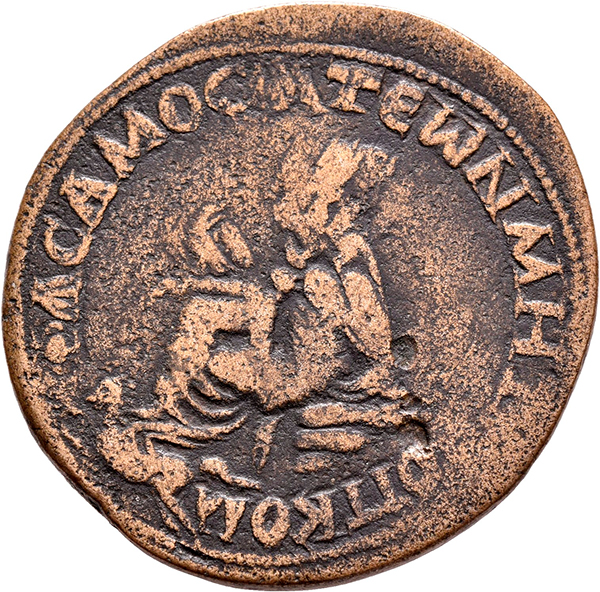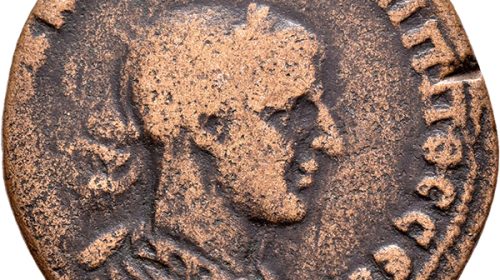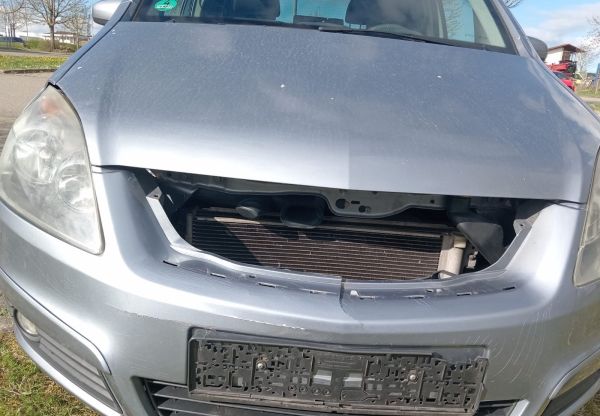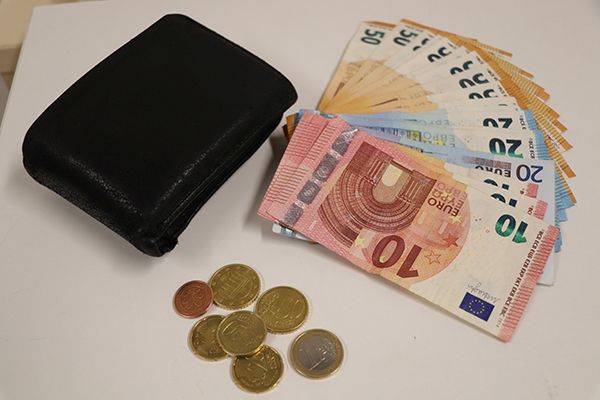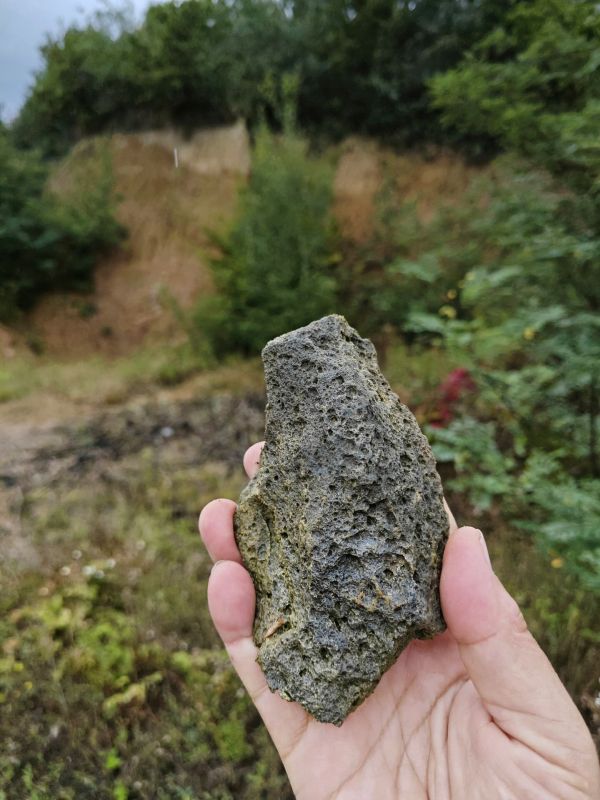By Jonas Brachmann
Today we will present a coin from ancient Samosata, a city in Roman Syria. Samosata was located near the modern city of Samsat in eastern Turkey, in the area affected by the severe earthquake. The bronze coin is 3.3 cm in diameter and 17 g in weight. The obverse shows a portrait bust of a beardless young man facing right. He wears a cuirass, a cloak over it, and a laurel wreath adorns his hair. The legend in Greek indicates that the coin was minted during the reign of the Roman emperor Philipus Arabs (247–249 AD), and that his youthful son Philipus II is depicted here.
The reverse shows a female figure, clad in a long robe and resting on a rock on which she is leaning with her left hand. Her head wears a mural crown that identifies her as Tyche, the city goddess. In her right hand she holds ears of grain, representing the prosperity and abundance of the city. An eagle with wings fanned out sits on her right wrist. Below her feet, a winged horse—the Pegasos—leaps to the left. The inscription tells us that the coin was minted in Samosata. It also refers to the city’s proud title: “Metropolis of Kommagene”, the region where Samosata is located. So what makes the reverse of this coin so important to our understanding of the ancient city of Samosata?
Ancient Samosata, was a city on the Euphrates River. In the center of the city was a fortified hill, the Acropolis. On it stood the Commagenic royal palace from the Hellenistic period (approx. 330–30 BC). Magnificent floor mosaics and wall paintings have been preserved. A sanctuary for Zeus, the father of the gods, is also believed to have stood on the flat summit. The eagle on Tyche’s wrist may refer to this sanctuary. Zeus often transformed into an eagle in the myths and was symbolized with the powerful bird of prey. The flat stone on which the city goddess perched could perhaps stand for the temple mount itself.
The leaping Pegasos under the feet of Tyche recalls the Roman era of the city: in 72 AD Samosata was annexed under the Roman emperor Vespasian (69–79 AD). A bridge and an aqueduct were built to ensure the supply of the city and to develop it as part of the Euphrates Limes. A legion, a unit of the Roman army, was also stationed there. The field sign of the legion was the Pegasos. So the reverse of the coin tells us about what was important for the identity of the ancient city of Samosata around 250 AD.
In the early 1990s, the archaeological remains of Samosata were flooded by the construction of the Ataturk Dam. Many finds were brought to the Adıyaman Archaeological Museum after rescue excavations—and the coins in museums around the world (such as in Tübingen) mean that the memory of the once powerful city of Samosata will not be forgotten.
The text was written in the winter semester 2021/22 at the Institute for Classical Archaeology at the University of Tübingen in the seminar “On the Coast and in the Desert. The Coins of Ancient Syria” under the direction of Prof. Stefan Krmnicek. The course was devoted to the extensive coinage of ancient Syrian cities and their cultural, religious and political background. Selected results of the students’ seminar work will be presented in tünews INTERNATIONAL so that as many people as possible can share in the interesting findings.
tun23032105
www.tuenews.de
001924
Bronzemünze aus Samosata. Die Rückseite zeigt das Kultbild der Tyche von Samosata (https://www.ikmk.uni-tuebingen.de/object?lang=de&id=ID7815). Foto: Stefan Krmnicek.
001925

